Sainte-Chapelle is a small Gothic royal chapel on the Ile de la Cité that has always been somewhat overshadowed but the awe-inspiring Notre-Dame de Paris that is almost literally right next door. If you have time to visit one Gothic church when right there – most people are going to choose Notre-Dame. However, since Notre-Dame has been closed for the reconstruction and renovation, this underrated but stunningly beautiful chapel has become super popular with people wanting to experience visiting a Gothic church complete with gorgoeous vaulted ceilings and medieval stained glass.
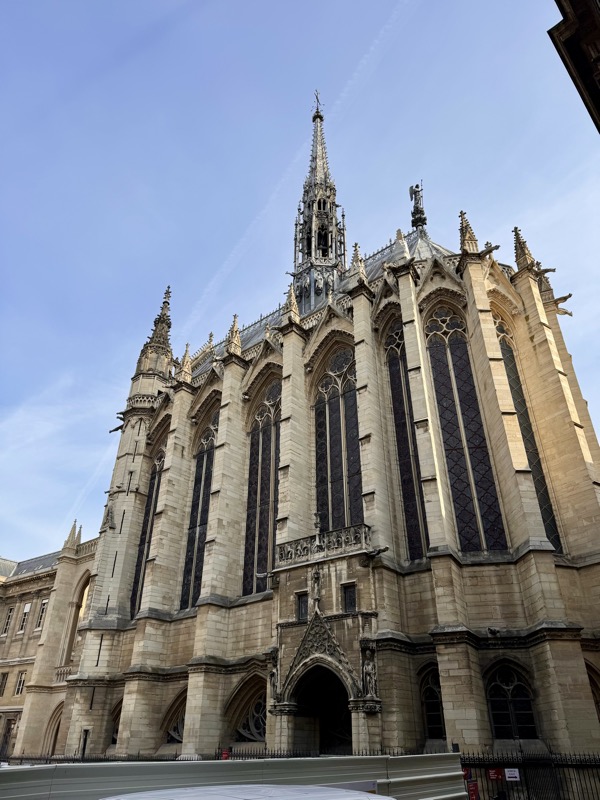
The chapel is within the medieval Palais de la Cité, (now the Palais de Justice – so security is high here), which was the residence of the Kings of France right up until the 14thC, and served as the private royal chapel to these Kings for centuries. .
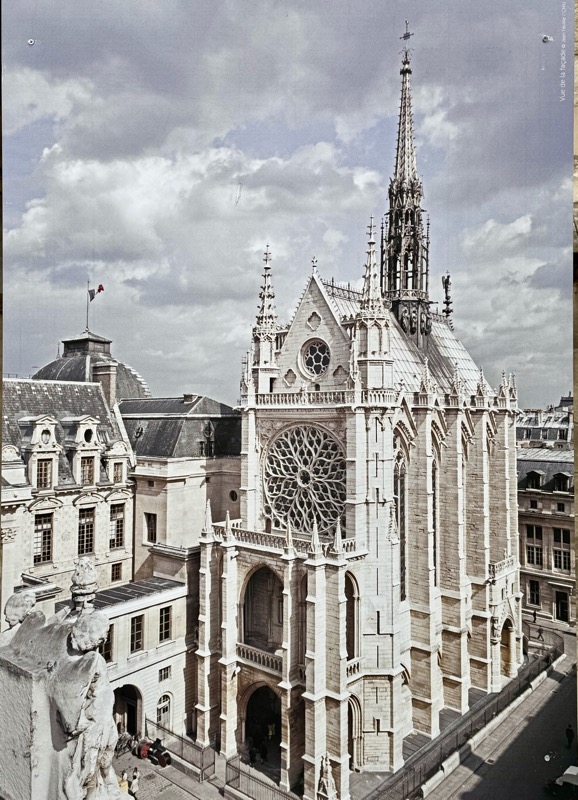
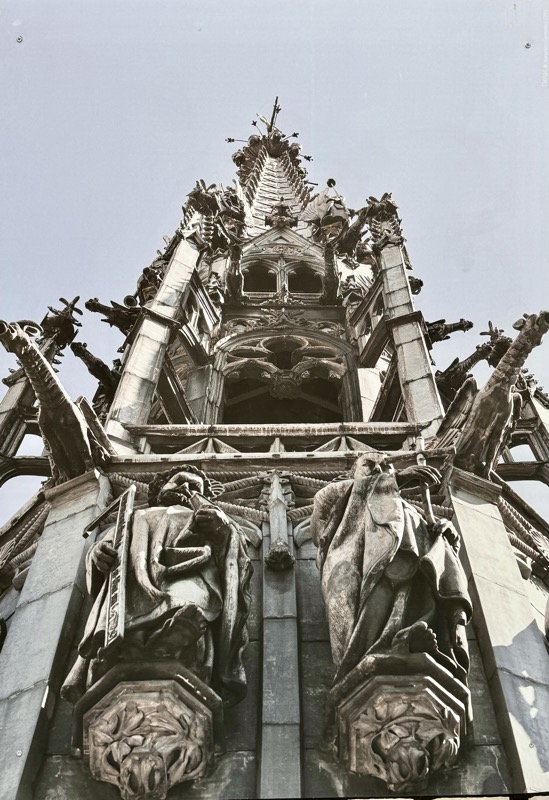
Construction on the chapel is understood to have started sometime after 1238, and it was consecrated on 26th of April 1248! Coincidence of course, but it was consecrated exactly 776 years ago today! It’s kinda mind blowing how a place like this this has survived nearly 800 years, through political revolutions and wars and industrialisation and progress… it’s withstood the enormous adversity.
I digress, the Sainte-Chapelle was considered to be one of hte highest achievements of the Rayonnant style of Gothic architecture and was commissioned by King Louis IX of France to house his reliquaries. At one time it housed what was believed to be the actual Christ’s Crown of Thorns which was later moved to Notre-Dame (I believe that reliquary survived the 2019 fire, but am not sure where it is currently located).
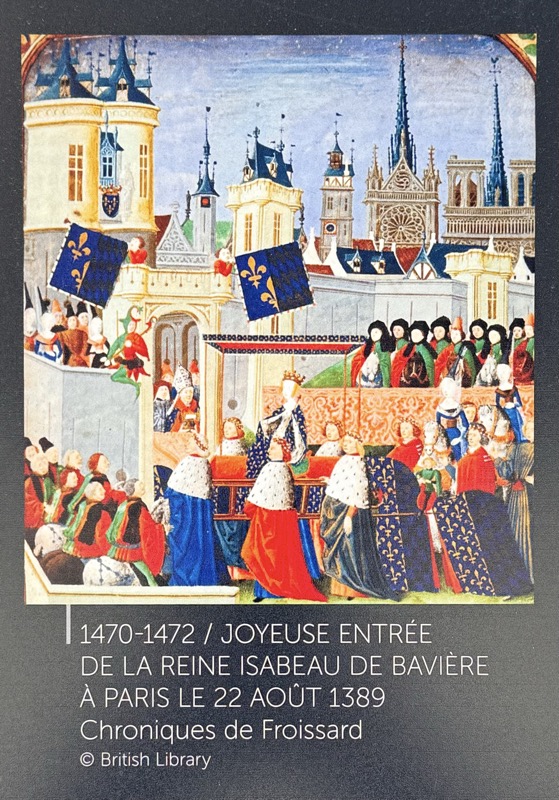
It was such a feature of the medieval Parisian skyline that it appears in several manuscripts from the 14thC and 15thC, which is so cool; you can see it was iconic even then. Though it is hard to imagine people harvesting a field outside these walls, which are now full of streets with traffic, and cute little cafes and cosy restaurants!
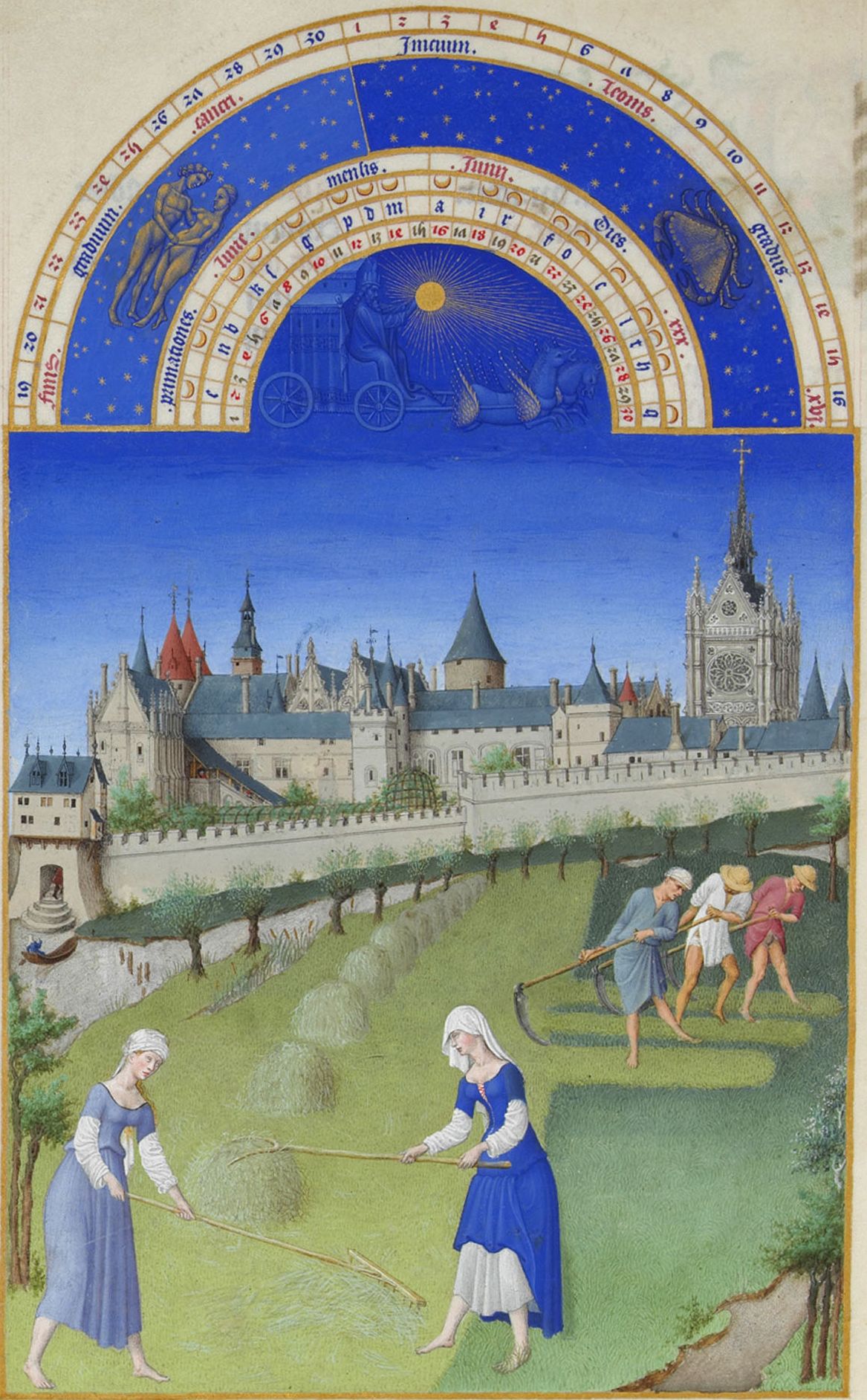
Portal of the Lower Chapel… The Lower Chapel was used as a church by the non-royal inhabitants of the Palace and surrounding neighbourhoods. The Palace was the seat of justice at the time, so lots of public servants, palace servants and local farmers if this manuscript image is anything to go by. This small chapel was dedicated to the Virign Mary, hence the statue at the entrance.
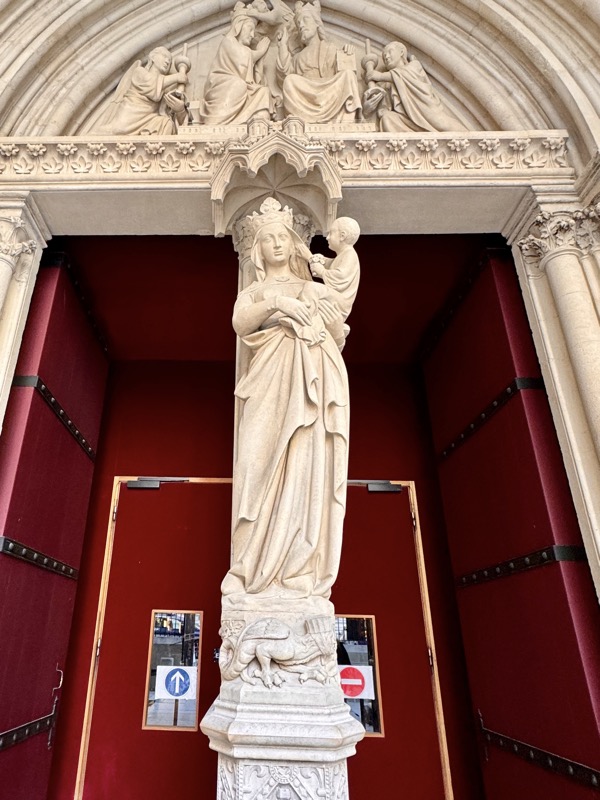
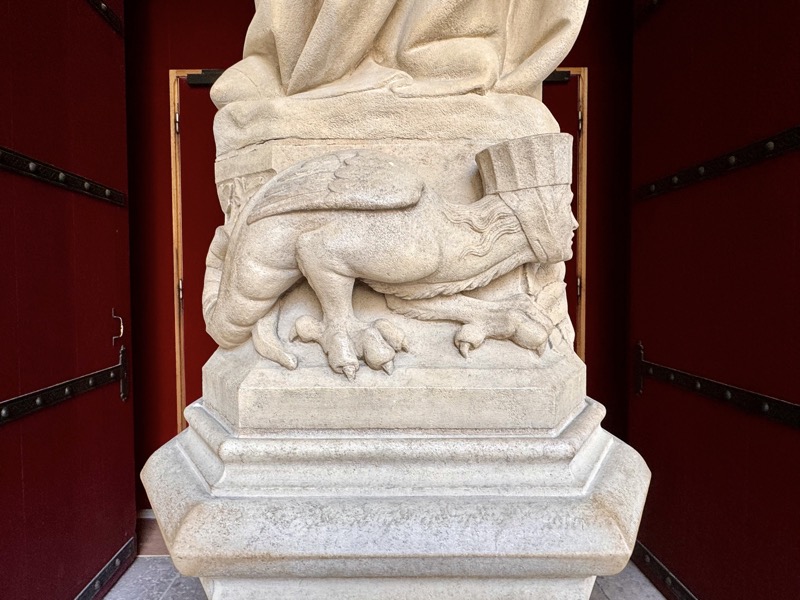
For a chapel built ‘not-for-Royalty’, is is remarkably beautiful! The walls and ceilings are covered in the fleur-de-lys motifs of France, as well as the castles of Blanche of Castile (a nod to Louis IX’s mother).
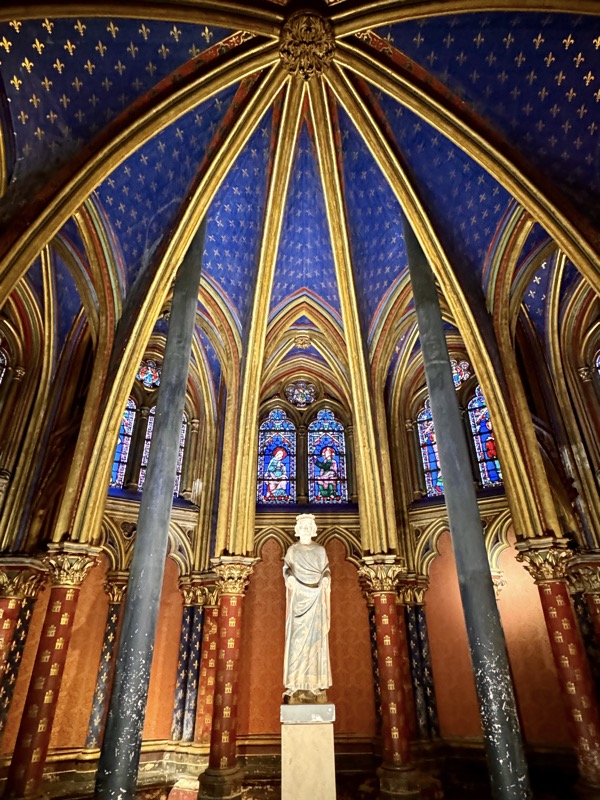
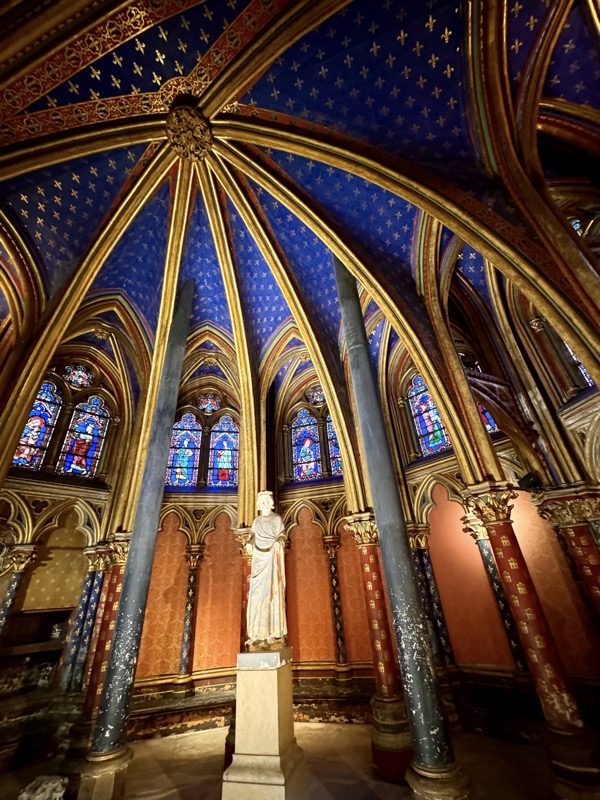
The original 13thC-14thC stained glass from the lower chapel was largely lost in a flood event in 1690 and subsequently replaced with plain glass panels. Then a restoration of the Chapel was undertaken in the 19thC, and most of the stained glass was replaced at that time with vibrant and colourful scenes depicting the Virgin Mary’s life. During this 19thC restoration, most of the ceilings, walls, colonnades and column capitals were also restored, which accounts for the chapel’s vibrant hues.
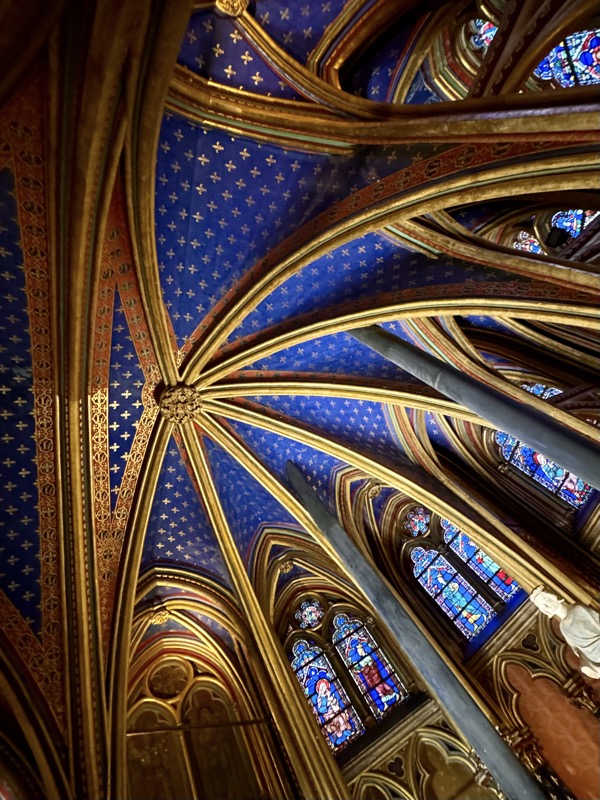
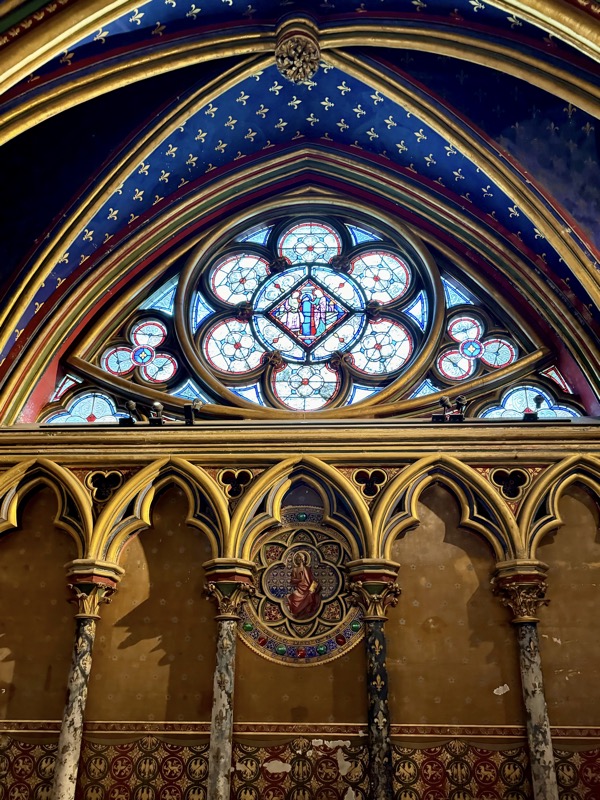
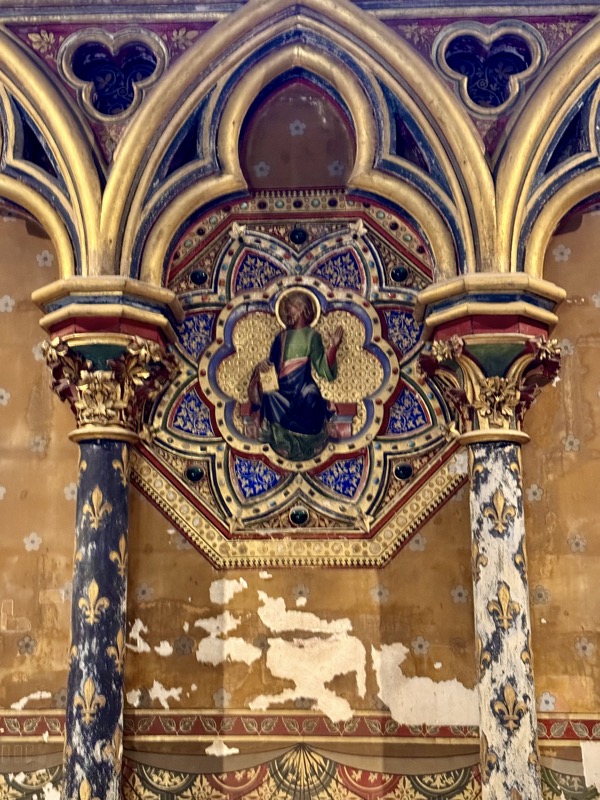
Most of the red and blue painted columns, and their golden fleur-de-lys and castles motifs were restored in that 19thC restoration period, but the floral acanthus leaves on the capitals are very typical of 13thC Gothic design, so these appear to remain unchanged during that renovation.
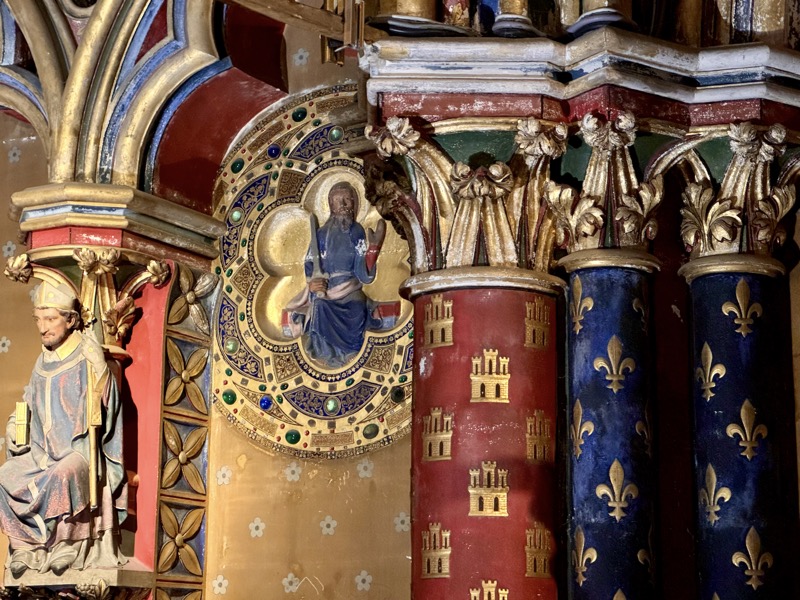
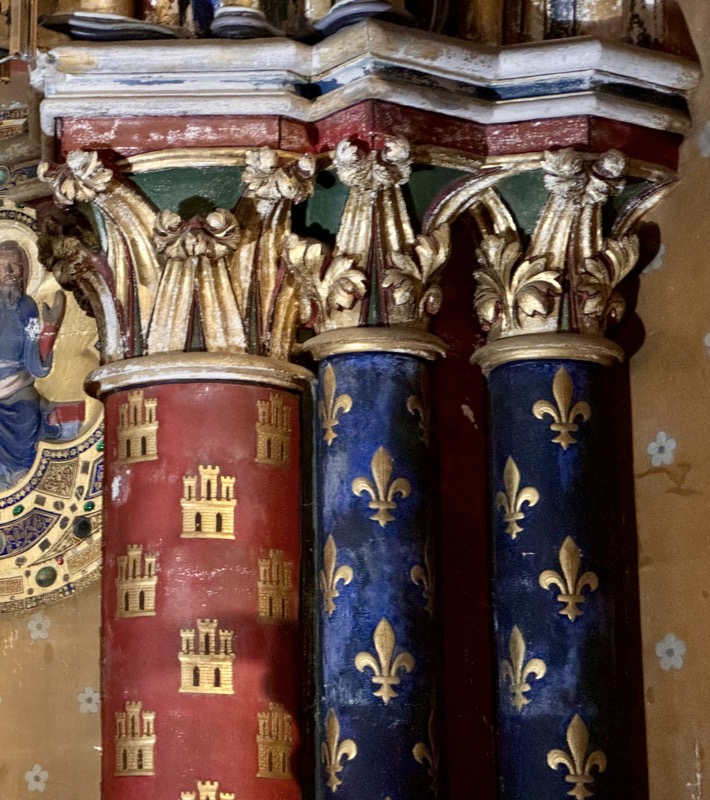
I’ve been to a LOT of medieval churches and cathedrals all over Europe, and have rarely seen anything so beautifully preserved.
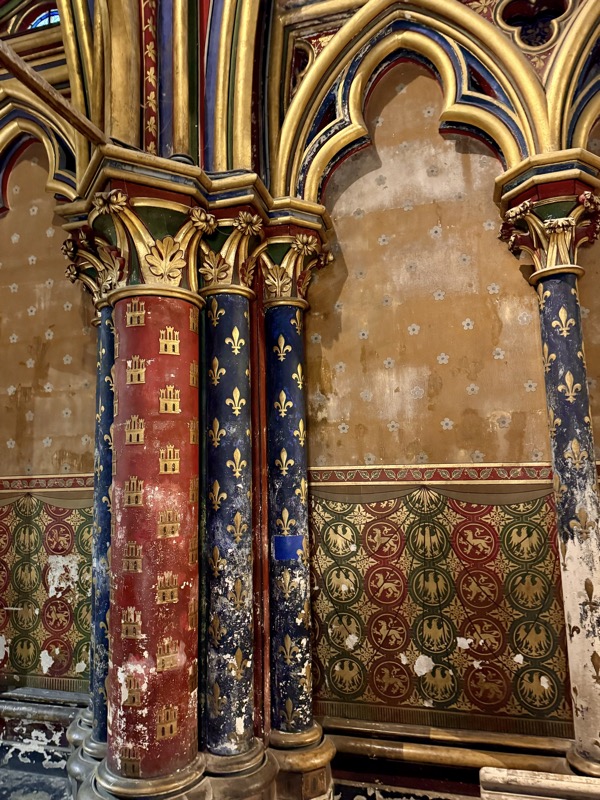
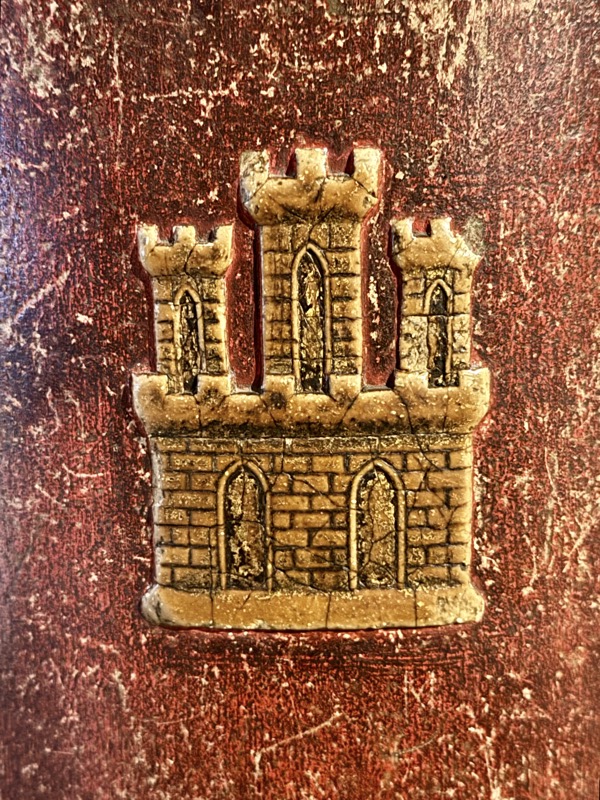
It’s so very detailed, and so well kept. I love this place.
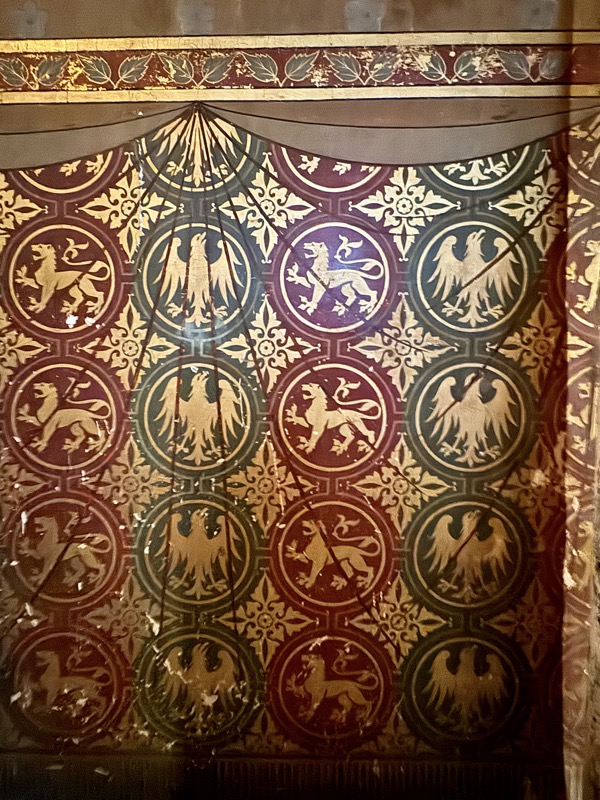
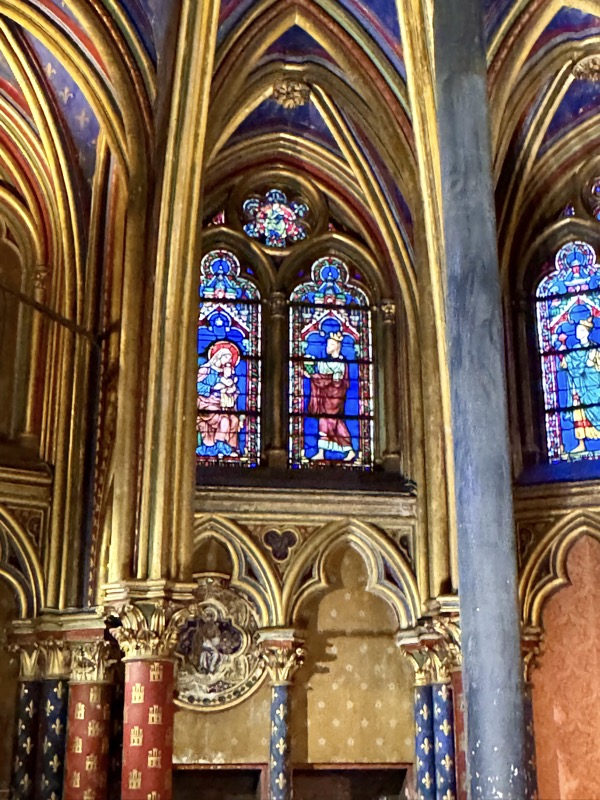
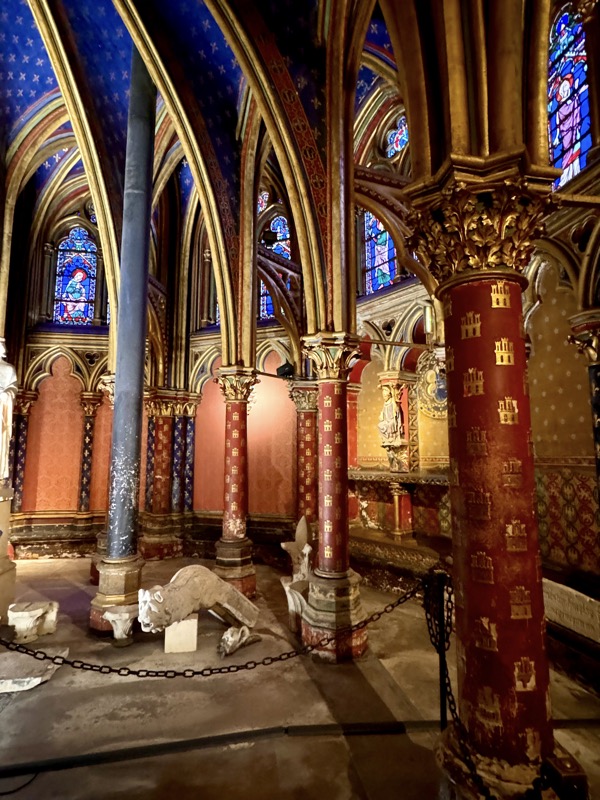
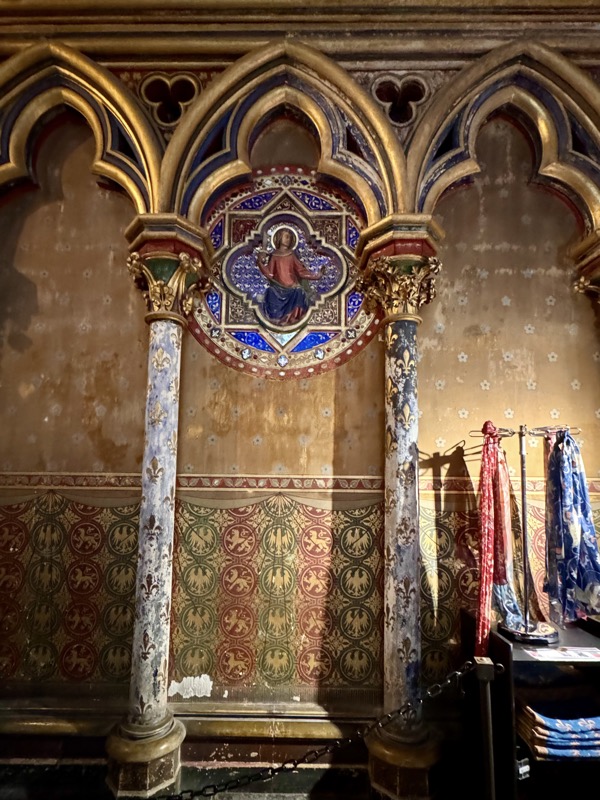
From the lower chapel (which also contains a gift shop and a small area to sit and admire the Lower Chapel, there is a winding stairway to gain access to the main feature – the Upper Chapel which served as a private chapel for the French Royalty. Thirty-five steps up a tight spiral staircase, (yes, we counted them because my knee is so fooked, I can hardly walk, but there was no way I was going to miss this… so I let a bunch of people go up before me and went about as slow as a 80 year old granny would going up the steps one at a time!) to see this:
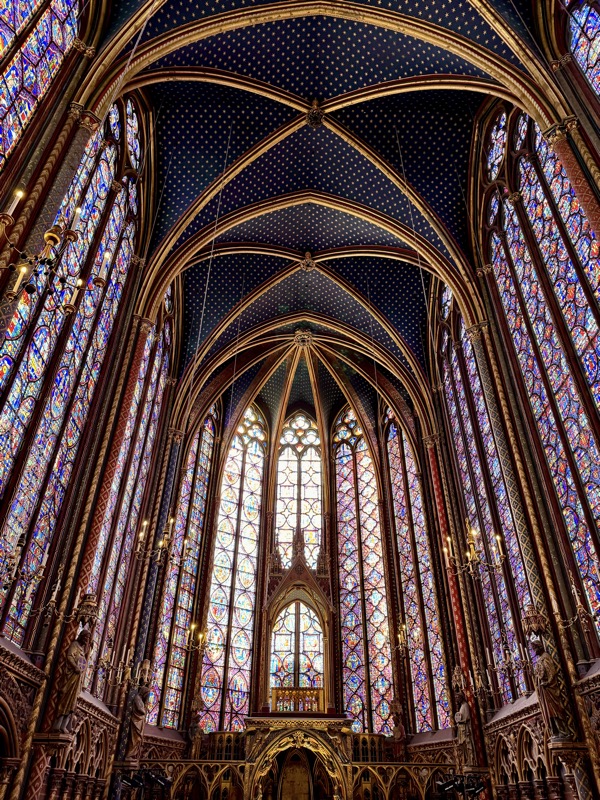
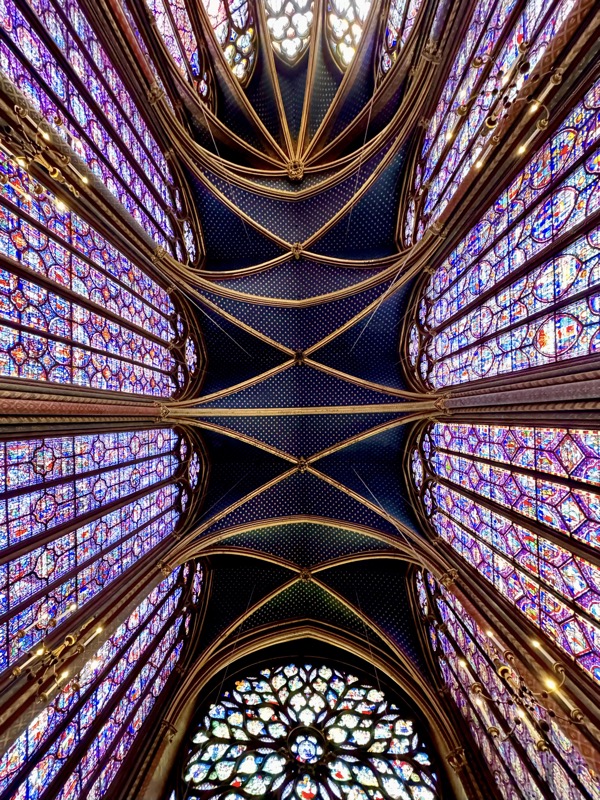
SPECTACULAR! The Upper Chapel is only 33m x 11m or so, but the walls feel like they are made almost entirely of stained glass. There is apparently 670sqm of stained glass in here (not counting the rose window on the west end of the Chapel); there is so much medieval glass here, it makes you wonder what is holding up the gorgeous ceiling! The first thing we did was find a seat and just take it all in. There was an English guide to the iconography of the glass – which I scanned and have added in here in case anyone is interested or I want to read it again later… but this chapel is so overwhelmingly in it’s beauty, I didn’t want to sit and dissect the art work white there. So this is an explanation of the glass:

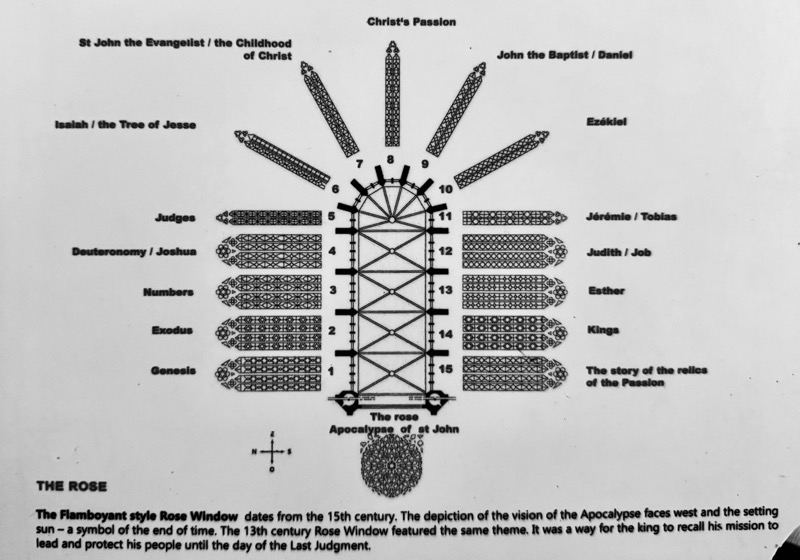
Stained glass is often quite hard to photograph – but this Chapel has it’s two lengths running north/south, so at certain times of day, the lengths of the building are receiving indirect sunlight, which is perfect conditions for attempting to photograph stained glass. I also have to admit, that the iPhone 15 Pro does a fantastic job of managing the low lighting conditions and the wide contrast ratio. I am seriously impressed, Mr Tim Apple.
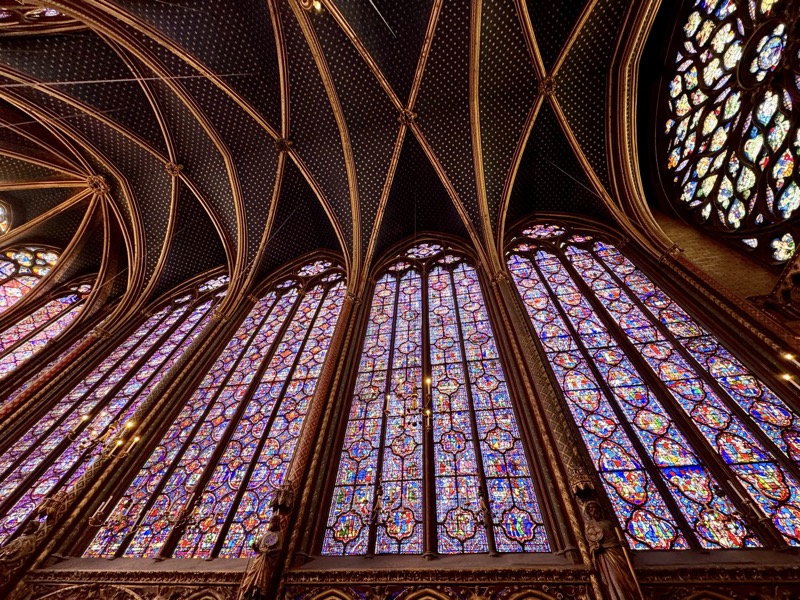
More heavily decorated colonnades, capitals and walls.
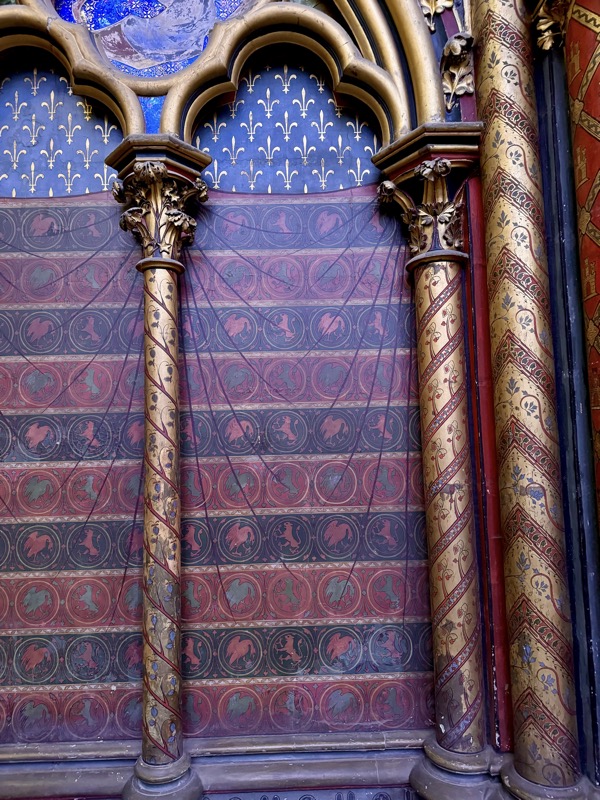
The altar area is just ‘ahhh, ahhh, ahh’… holy light spilling down from the medieval glass. Most of the windows were put in place between 1242 and 1248, and it’s not hard to see why medieval people would have come into this place and believed with their whole heart that ‘God Lived Here’. No matter how hard I try to imagine what it would be like to enter a place like this when you live in a world without the constant bombardment of modern imagery – photographs, books, newspapers, media, television, film, advertising etc, I am sure I am failing at trying to imagine the full impact that a place like this would have had on a medieval person. It would have been awe inspiring in the truest sense of the word, ‘awe’.
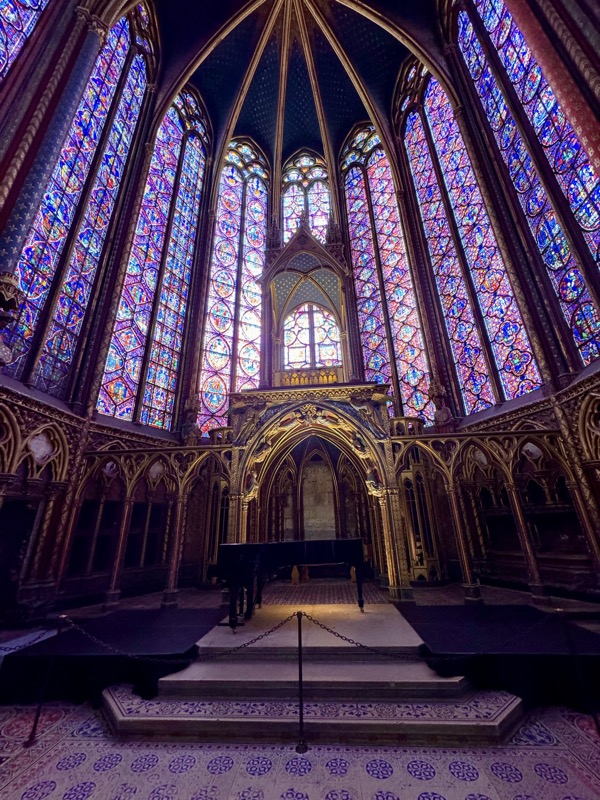
This is why we travel… you can see pictures of these amazing places on the internet very easily every day, but you can’t fully appreciate the grandeur, the detailed workmanship, the dedication, and the enormity of an undertaking that is was, to build a place like this.
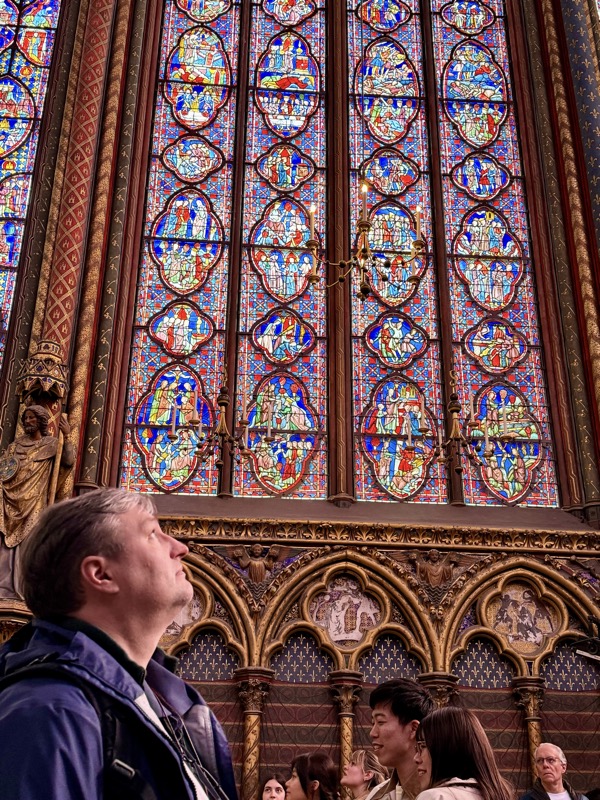
The Rose Window of Sainte-Chapelle on the western side of the chapel, was installed in the 15thC and depicts scenes from the Apocalypse. In the 15thC the painting of stained glass became popular usuign a technique called silver-stain, which allowed the glassmakers to pain onto the glass with enamel and then fire the pieces to fuse the paint to the glass. This allowed for more detailed design work with shading techniques becoming prominent in stained glasswork around that time. The Rose Window was cleaned between 2015-2019 so it appears particularly vibrant today (thank goodness we weren’t here while that was all under scaffold).
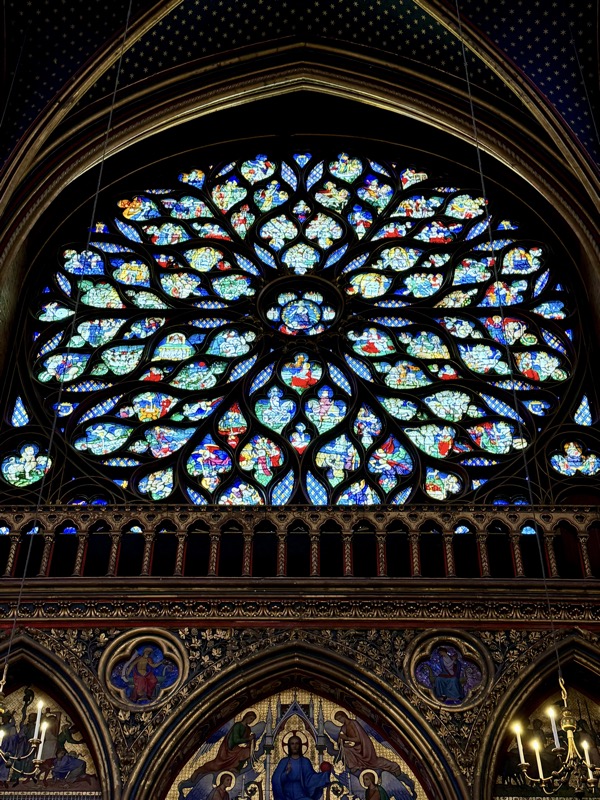
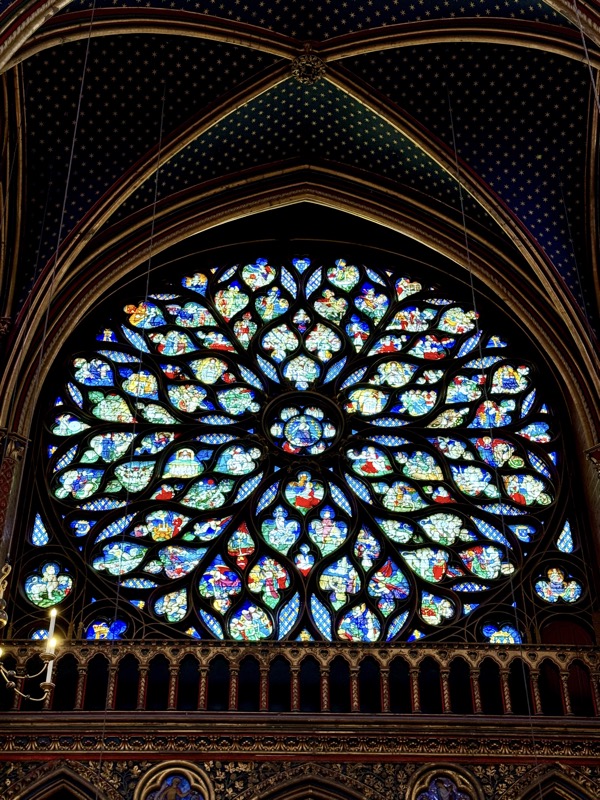
Mr K was enamoured of this little multi-headed beastie that resides on the lower left side of the Rose Window… again, iPhone – colour me impressed.
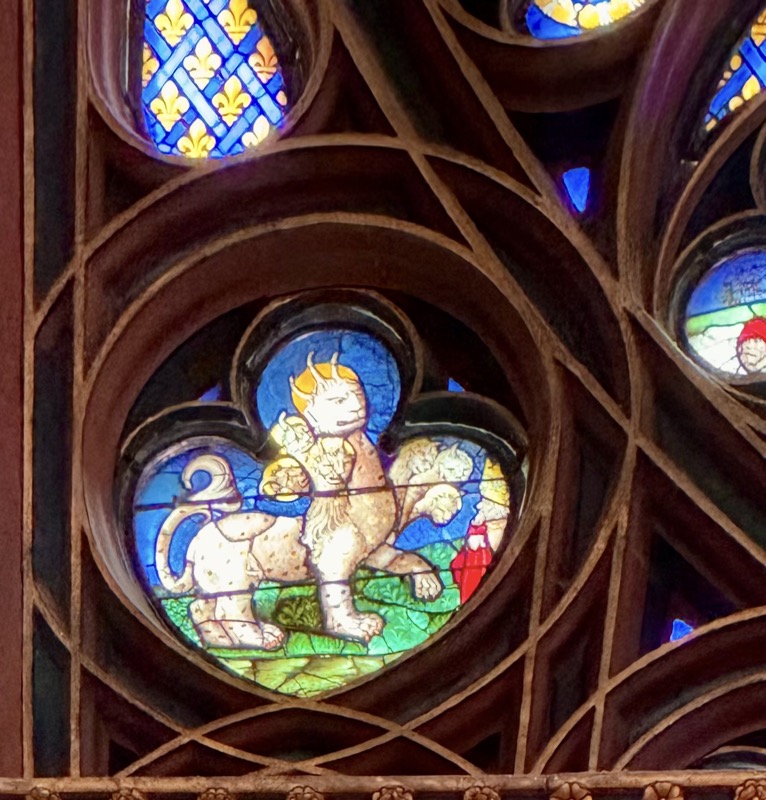
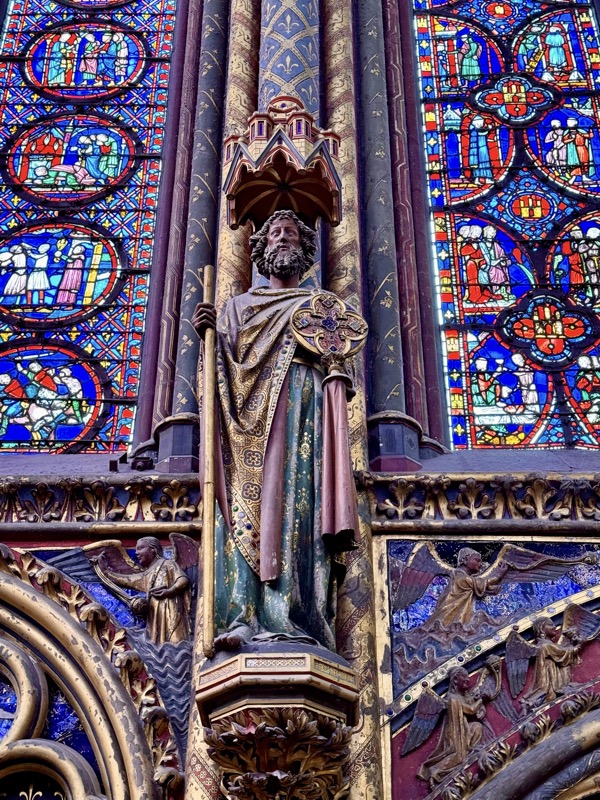
This is one of those posts where I am completely unapologetic about the bulk of imagery included (sorry Yale). Words just don’t do it justice.
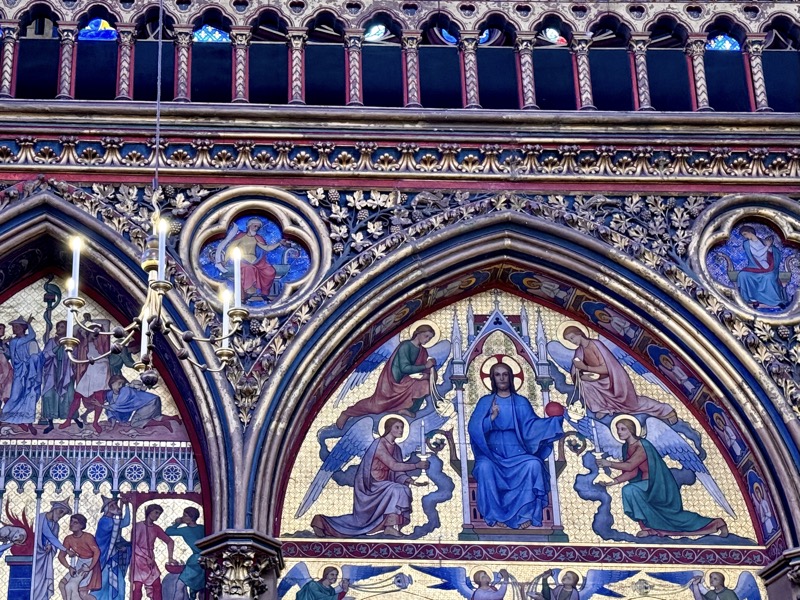
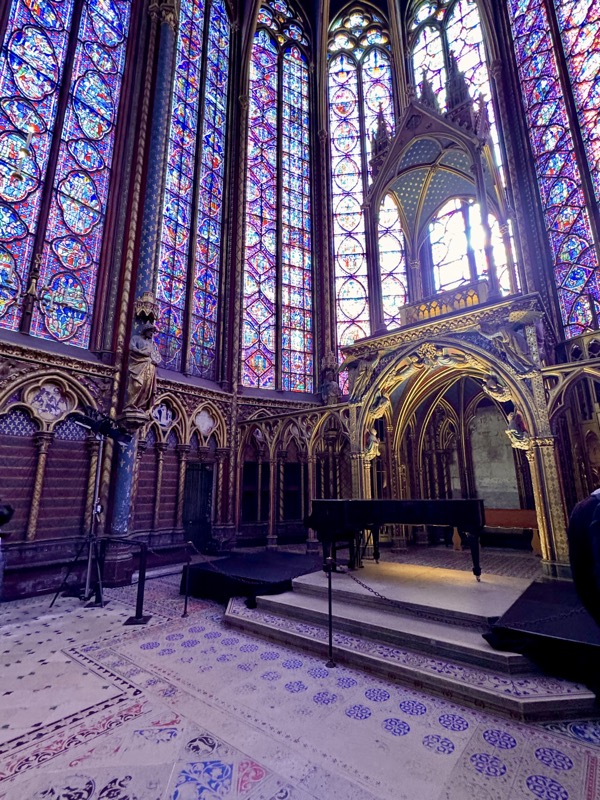
We must have stayed in here nearly an hour, just marvelling at the glass, the painted ceilings, the floor tiles, the light pouring in. It was incredible.
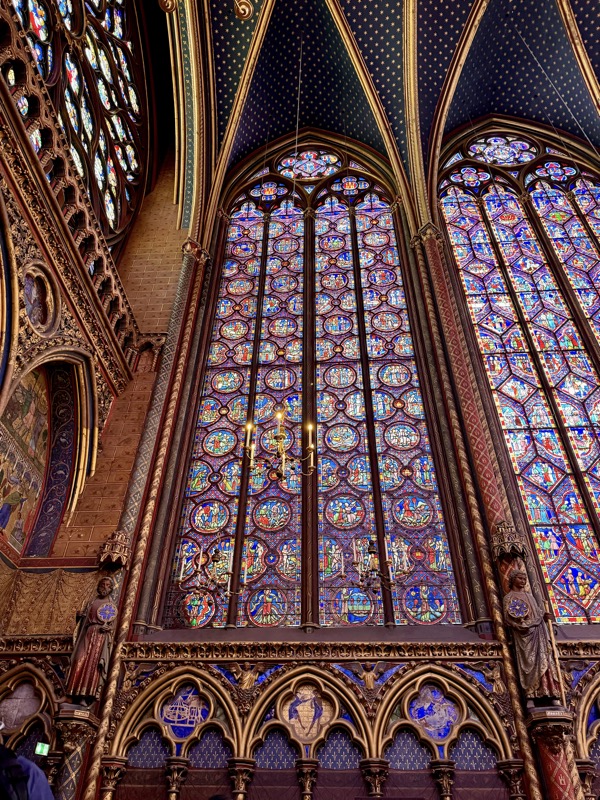
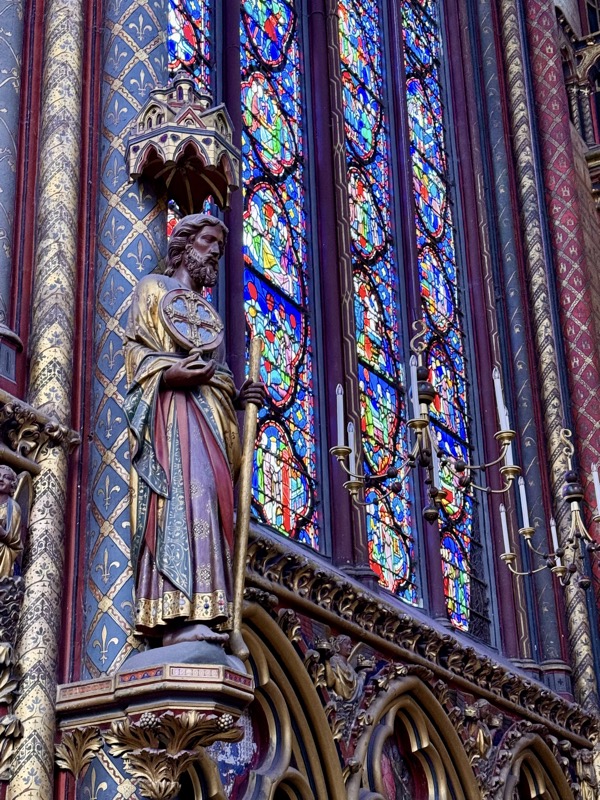
So many beautiful aspects to turn the camera to.
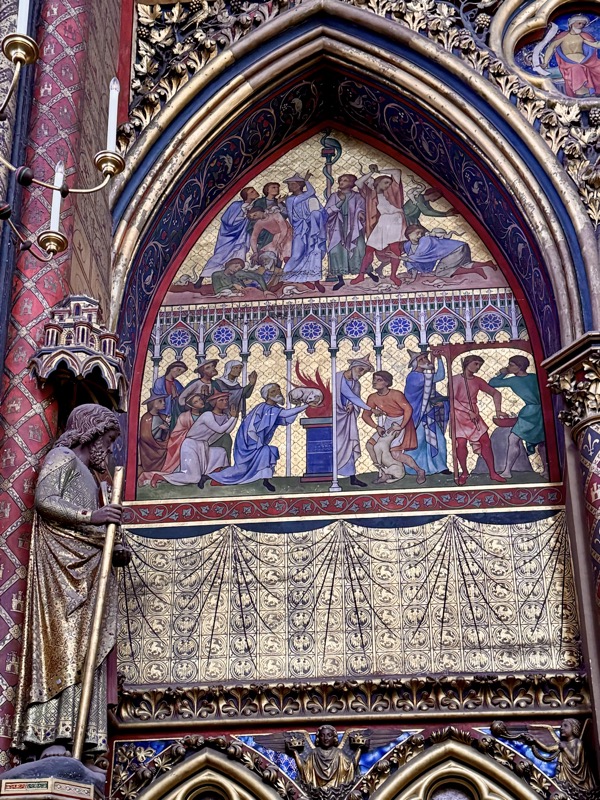
Patience is rewarded – if you can out wait the people who insist on taking so many selfies that is.
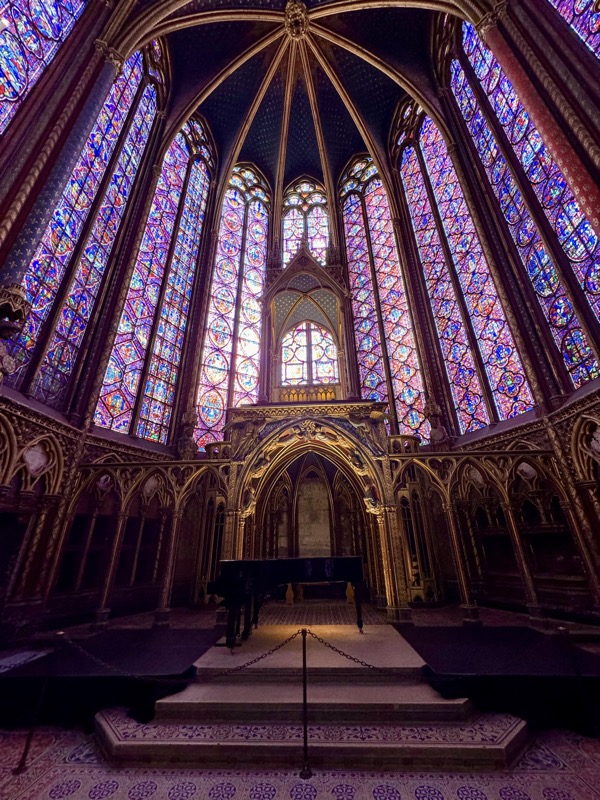
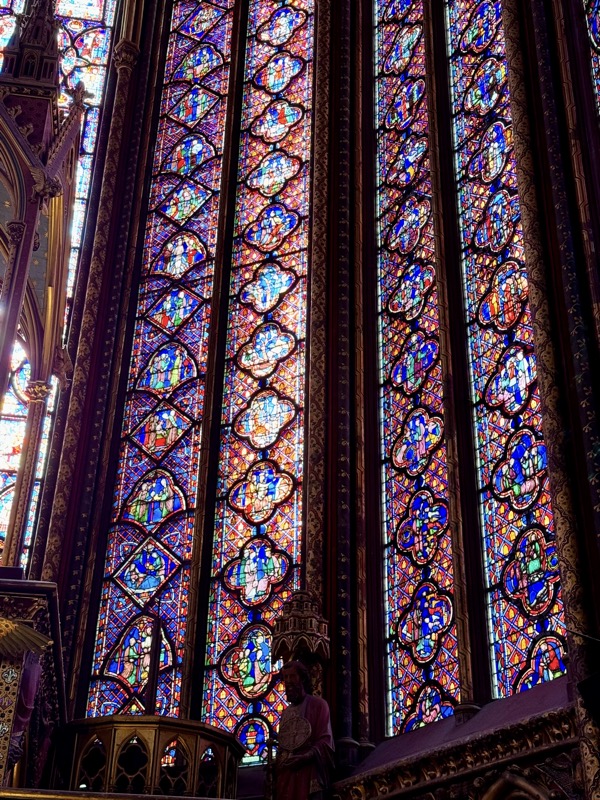
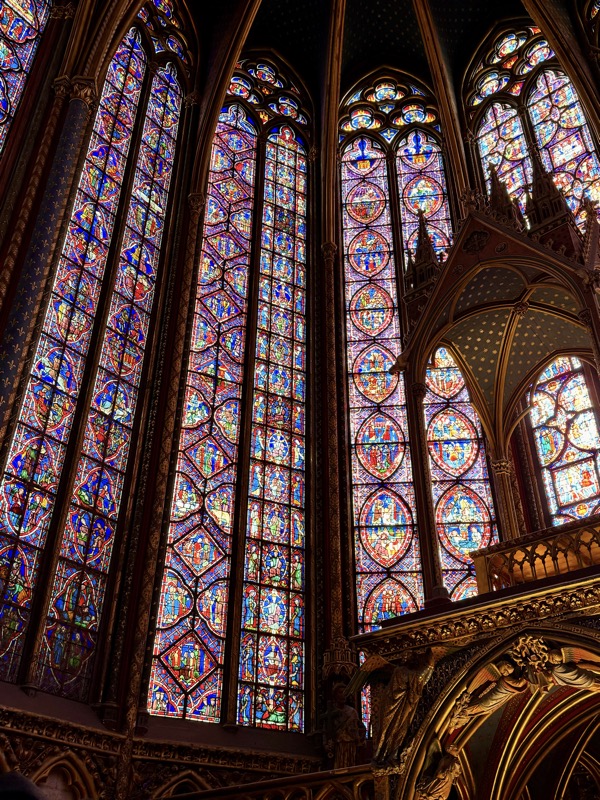
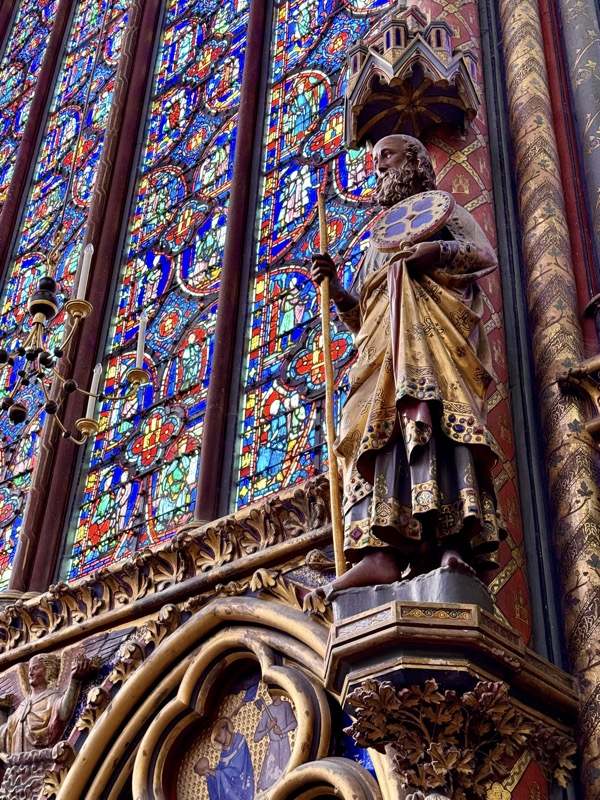
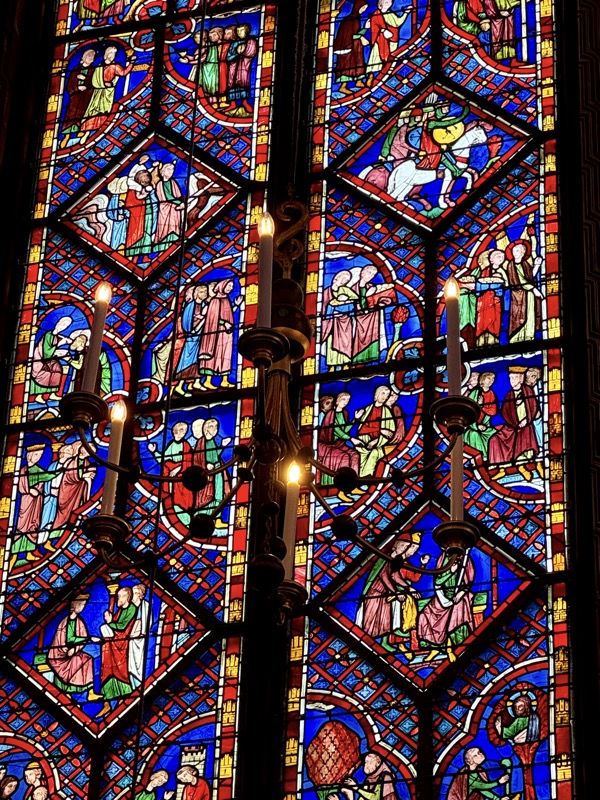
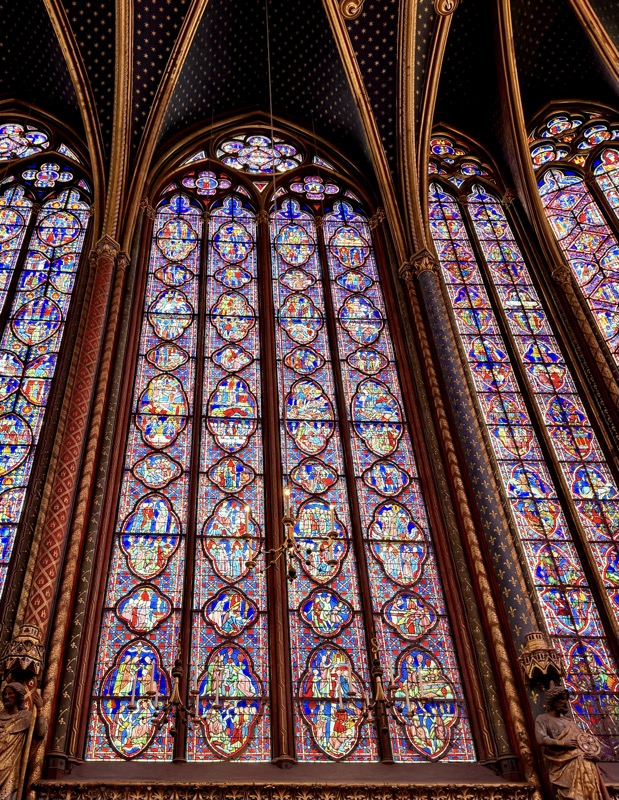
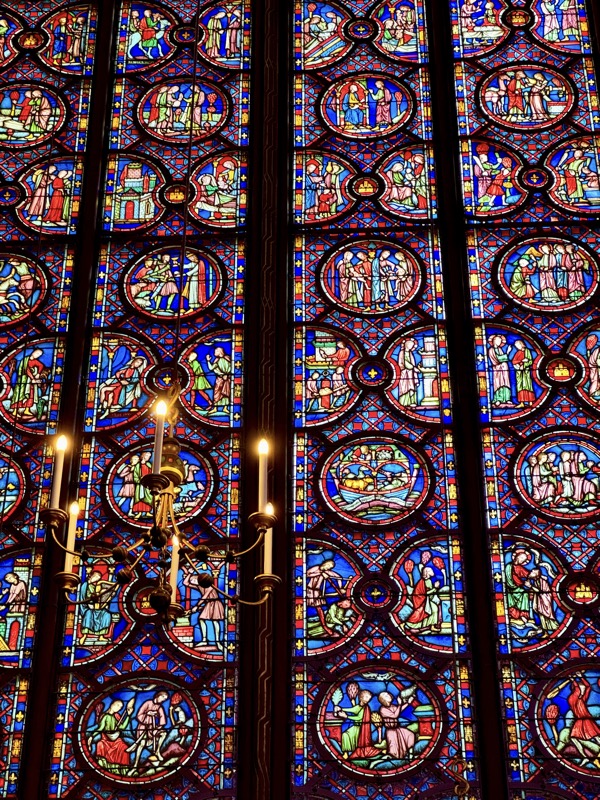
Wow. Just amazing. If you’re coming to Paris, and whether Notre-Dame is open or not, do yourself a favour and try to visit Sainte-Chapelle. Who knows, if Notre-Dame is open, perhaps it will fade into obscurity again and you will get a chance to visit with fewer fellow travellers. I would definitely put a couple of hours aside to come back next time I am in this part of the world.
Back out into the Real World. The Palais de Justice is still a working building today and was bustling with robed barristers and lawyers coming and going.
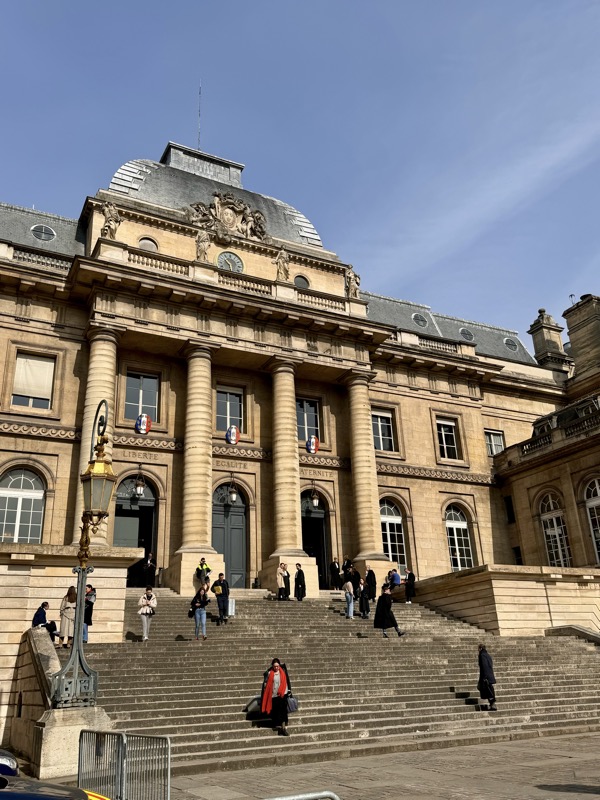
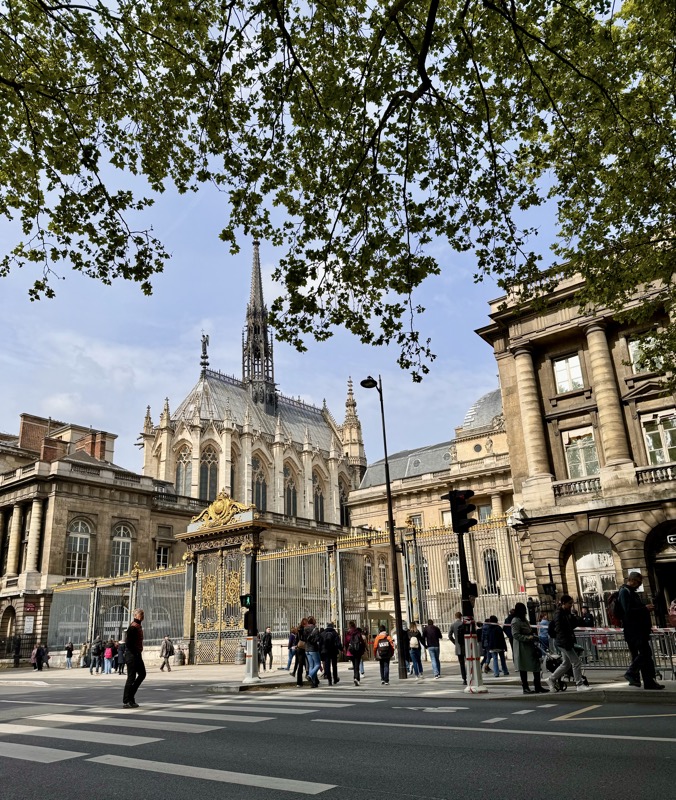
Such a cool morning out! We have a lunch appointment and then back to the hotel for work.
